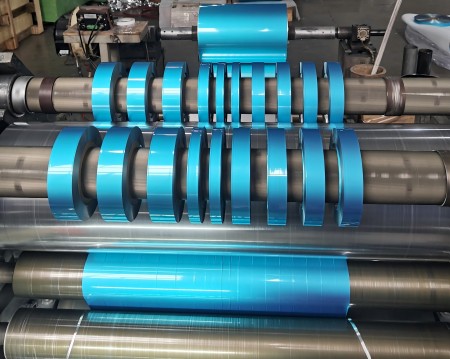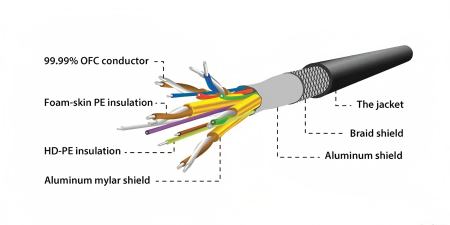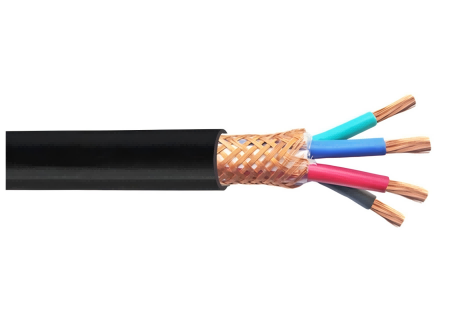Aluminum Foil Mylar Tape:
Aluminum foil Mylar Tape is made from soft aluminum foil and polyester film, which are combined using gravure coating. After curing, the aluminum foil Mylar is slit into rolls. It can be customized with adhesive, and after die-cutting, it is used for shielding and grounding assemblies. Aluminum foil Mylar is primarily used in communication cables for interference shielding. Types of aluminum foil Mylar include single-sided aluminum foil, double-sided aluminum foil, butterfly aluminum foil, heat-melt aluminum foil, aluminum foil tape, and aluminum-plastic composite tape. The aluminum layer provides excellent conductivity, shielding performance, and corrosion resistance, making it suitable for a wide range of applications. The shielding range typically spans from 100KHz to 3GHz.
Among these, heat-melt aluminum foil Mylar is coated with a layer of hot-melt adhesive on the side that contacts the cable. Under high temperature preheating, the hot-melt adhesive bonds tightly with the cable core insulation, improving the cable’s shielding performance. In contrast, standard aluminum foil lacks adhesive properties and is simply wrapped around the insulation, resulting in lower shielding effectiveness.
Features and Applications:
Aluminum foil Mylar is primarily used to shield high-frequency electromagnetic waves and prevent them from coming into contact with the cable’s conductor, which could induce current and increase crosstalk. When high-frequency electromagnetic waves encounter aluminum foil, according to Faraday’s electromagnetic induction law, the waves adhere to the surface of the foil and induce current. At this point, a conductor is required to direct the induced current into the ground, preventing interference with signal transmission. Cables with aluminum foil shielding typically require a minimum repetition rate of 25% for the aluminum foil.
The most common application is in network wiring, especially in hospitals, factories, and other environments with significant electromagnetic radiation or numerous high-powered devices. Additionally, they are used in government facilities and other areas with high network security requirements.
Copper/Aluminum-Magnesium Alloy Wire Braiding (Metal Shielding):
Metal shielding is formed by braiding metal wires into a specific structure using a braiding machine. Shielding materials typically include copper wire (tinned copper wire), aluminum alloy wire, copper-clad aluminum, copper tape (copper-plastic tape), aluminum tape (aluminum-plastic tape), and steel tape. Different braiding structures provide varying levels of shielding performance. The shielding efficiency of the braiding layer depends on factors such as the electrical conductivity and magnetic permeability of the metal, as well as the number of layers, coverage, and braiding angle.
The more layers and the greater the coverage, the better the shielding performance. The braiding angle should be controlled between 30°-45°, and for single-layer braiding, the coverage should be at least 80%. This allows the shielding to absorb electromagnetic waves through mechanisms like magnetic hysteresis, dielectric loss, and resistance loss, converting unwanted energy into heat or other forms, effectively shielding the cable from electromagnetic interference.
Features and Applications:
Braided shielding is typically made from tinned copper wire or aluminum-magnesium alloy wire and is mainly used to prevent low-frequency electromagnetic interference. The principle of operation is similar to that of aluminum foil. For cables using braided shielding, the mesh density should generally exceed 80%. This type of braided shielding is widely used to reduce external crosstalk in environments where many cables are laid in the same cable trays. Additionally, it can be used for shielding between wire pairs, increasing the twist length of the wire pairs and reducing the twisting pitch requirements for cables.
Post time: Jan-21-2025




